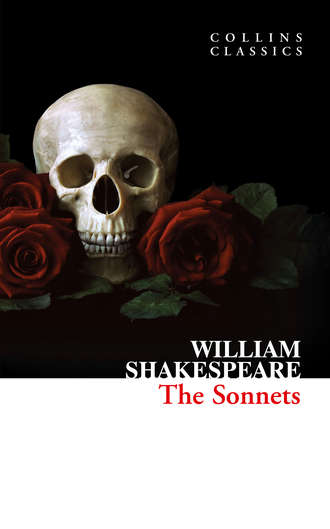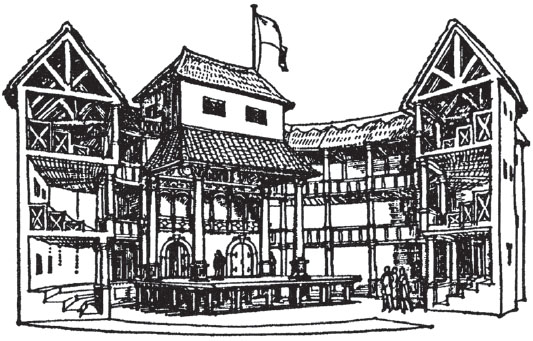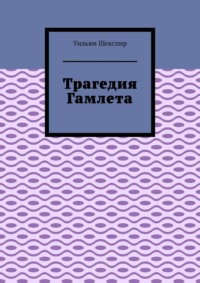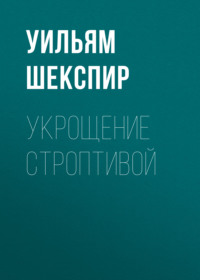
Полная версия
The Sonnets

THE ALEXANDER SHAKESPEARE
THE SONNETS
William Shakespeare

Copyright
William Collins
An imprint of HarperCollinsPublishers
1 London Bridge Street,
London SE1 9GF
www.WilliamCollinsBooks.com
This eBook edition published by William Collins in 2016
Life & Times section © HarperCollinsPublishers Ltd
Gerard Cheshire asserts his moral right as author of the Life & Times section
Shakespeare: Words and Phrases adapted from
Collins English Dictionary
Cover by e-Digital Design
Cover image © croisy/iStock
A catalogue record for this book is available from the British Library.
All rights reserved under International and Pan-American Copyright Conventions. By payment of the required fees, you have been granted the non-exclusive, non-transferable right to access and read the text of this e-book on-screen. No part of this text may be reproduced, transmitted, down-loaded, decompiled, reverse engineered, or stored in or introduced into any information storage and retrieval system, in any form or by any means, whether electronic or mechanical, now known or hereinafter invented, without the express written permission of HarperCollins.
Source ISBN: 9780008171285
Ebook Edition © January 2016 ISBN: 9780008171292
Version: 2016-01-07
Prefatory Note
This Shakespeare play uses the full Alexander text. By keeping in mind the fact that the language has changed considerably in four hundred years, as have customs, jokes, and stage conventions, the editors have aimed at helping the modern reader – whether English is their mother tongue or not – to grasp the full significance of the play. The Notes, intended primarily for examination candidates, are presented in a simple, direct style. The needs of those unfamiliar with British culture have been specially considered.
Since quiet study of the printed word is unlikely to bring fully to life plays that were written directly for the public theatre, attention has been drawn to dramatic effects which are important in performance. The editors see Shakespeare’s plays as living works of art which can be enjoyed today on stage, film and television in many parts of the world.
CONTENTS
Cover
Title Page
Copyright
Prefatory Note
The Theatre in Shakespeare’s Day
Shakespeare: A Timeline
Life & Times
Money in Shakespeare’s Day
The Sonnets
Sonnet 1
Sonnet 2
Sonnet 3
Sonnet 4
Sonnet 5
Sonnet 6
Sonnet 7
Sonnet 8
Sonnet 9
Sonnet 10
Sonnet 11
Sonnet 12
Sonnet 13
Sonnet 14
Sonnet 15
Sonnet 16
Sonnet 17
Sonnet 18
Sonnet 19
Sonnet 20
Sonnet 21
Sonnet 22
Sonnet 23
Sonnet 24
Sonnet 25
Sonnet 26
Sonnet 27
Sonnet 28
Sonnet 29
Sonnet 30
Sonnet 31
Sonnet 32
Sonnet 33
Sonnet 34
Sonnet 35
Sonnet 36
Sonnet 37
Sonnet 38
Sonnet 39
Sonnet 40
Sonnet 41
Sonnet 42
Sonnet 43
Sonnet 44
Sonnet 45
Sonnet 46
Sonnet 47
Sonnet 48
Sonnet 49
Sonnet 50
Sonnet 51
Sonnet 52
Sonnet 53
Sonnet 54
Sonnet 55
Sonnet 56
Sonnet 57
Sonnet 58
Sonnet 59
Sonnet 60
Sonnet 61
Sonnet 62
Sonnet 63
Sonnet 64
Sonnet 65
Sonnet 66
Sonnet 67
Sonnet 68
Sonnet 69
Sonnet 70
Sonnet 71
Sonnet 72
Sonnet 73
Sonnet 74
Sonnet 75
Sonnet 76
Sonnet 77
Sonnet 78
Sonnet 79
Sonnet 80
Sonnet 81
Sonnet 82
Sonnet 83
Sonnet 84
Sonnet 85
Sonnet 86
Sonnet 87
Sonnet 88
Sonnet 89
Sonnet 90
Sonnet 91
Sonnet 92
Sonnet 93
Sonnet 94
Sonnet 95
Sonnet 96
Sonnet 97
Sonnet 98
Sonnet 99
Sonnet 100
Sonnet 101
Sonnet 102
Sonnet 103
Sonnet 104
Sonnet 105
Sonnet 106
Sonnet 107
Sonnet 108
Sonnet 109
Sonnet 110
Sonnet 111
Sonnet 112
Sonnet 113
Sonnet 114
Sonnet 115
Sonnet 116
Sonnet 117
Sonnet 118
Sonnet 119
Sonnet 120
Sonnet 121
Sonnet 122
Sonnet 123
Sonnet 124
Sonnet 125
Sonnet 126
Sonnet 127
Sonnet 128
Sonnet 129
Sonnet 130
Sonnet 131
Sonnet 132
Sonnet 133
Sonnet 134
Sonnet 135
Sonnet 136
Sonnet 137
Sonnet 138
Sonnet 139
Sonnet 140
Sonnet 141
Sonnet 142
Sonnet 143
Sonnet 144
Sonnet 145
Sonnet 146
Sonnet 147
Sonnet 148
Sonnet 149
Sonnet 150
Sonnet 151
Sonnet 152
Sonnet 153
Sonnet 154
Shakespeare: Words and Phrases
About the Publisher

An Elizabethan playhouse. Note the apron stage protruding into the auditorium, the space below it, the inner room at the rear of the stage, the gallery above the inner stage, the canopy over the main stage, and the absence of a roof over the audience.
The Theatre in Shakespeare’s Day
On the face of it, the conditions in the Elizabethan theatre were not such as to encourage great writers. The public playhouse itself was not very different from an ordinary inn-yard; it was open to the weather; among the spectators were often louts, pickpockets and prostitutes; some of the actors played up to the rowdy elements in the audience by inserting their own jokes into the authors’ lines, while others spoke their words loudly but unfeelingly; the presentation was often rough and noisy, with fireworks to represent storms and battles, and a table and a few chairs to represent a tavern; there were no actresses, so boys took the parts of women, even such subtle and mature ones as Cleopatra and Lady Macbeth; there was rarely any scenery at all in the modern sense. In fact, a quick inspection of the English theatre in the reign of Elizabeth I by a time-traveller from the twentieth century might well produce only one positive reaction: the costumes were often elaborate and beautiful.
Shakespeare himself makes frequent comments in his plays about the limitations of the playhouse and the actors of his time, often apologizing for them. At the beginning of Henry V the Prologue refers to the stage as ‘this unworthy scaffold’ and to the theatre building (the Globe, probably) as ‘this wooden O’, and emphasizes the urgent need for imagination in making up for all the deficiencies of presentation. In introducing Act IV the Chorus goes so far as to say:
… we shall much disgrace
With four or five most vile and ragged foils,
Right ill-dispos’d in brawl ridiculous,
The name of Agincourt, (lines 49–52)
In A Midsummer Night’s Dream (Act V, Scene i) he seems to dismiss actors with the words:
The best in this kind are but shadows.
Yet Elizabeth’s theatre, with all its faults, stimulated dramatists to a variety of achievement that has never been equalled and, in Shakespeare, produced one of the greatest writers in history. In spite of all his grumbles he seems to have been fascinated by the challenge that it presented him with. It is necessary to re-examine his theatre carefully in order to understand how he was able to achieve so much with the materials he chose to use. What sort of place was the Elizabethan playhouse in reality? What sort of people were these criticized actors? And what sort of audiences gave them their living?
The Development of the Theatre up to Shakespeare’s Time
For centuries in England noblemen had employed groups of skilled people to entertain them when required. Under Tudor rule, as England became more secure and united, actors such as these were given more freedom, and they often performed in public, while still acknowledging their ‘overlords’ (in the 1570s, for example, when Shakespeare was still a schoolboy at Stratford, one famous company was called ‘Lord Leicester’s Men’). London was rapidly becoming larger and more important in the second half of the sixteenth century, and many of the companies of actors took the opportunities offered to establish themselves at inns on the main roads leading to the City (for example, the Boar’s Head in Whitechapel and the Tabard in South-wark) or in the City itself. These groups of actors would come to an agreement with the inn-keeper which would give them the use of the yard for their performances after people had eaten and drunk well in the middle of the day. Before long, some inns were taken over completely by companies of players and thus became the first public theatres. In 1574 the officials of the City of London issued an order which shows clearly that these theatres were both popular and also offensive to some respectable people, because the order complains about ‘the inordinate haunting of great multitudes of people, specially youth, to plays interludes and shows; namely occasion of frays and quarrels, evil practices of incontinency in great inns …’ There is evidence that, on public holidays, the theatres on the banks of the Thames were crowded with noisy apprentices and tradesmen, but it would be wrong to think that audiences were always undiscriminating and loudmouthed. In spite of the disapproval of Puritans and the more staid members of society, by the 1590s, when Shakespeare’s plays were beginning to be performed, audiences consisted of a good cross-section of English society, nobility as well as workers, intellectuals as well as simple people out for a laugh; also (and in this respect English theatres were unique in Europe), it was quite normal for respectable women to attend plays. So Shakespeare had to write plays which would appeal to people of widely different kinds. He had to provide ‘something for everyone’ but at the same time to take care to unify the material so that it would not seem to fall into separate pieces as they watched it. A speech like that of the drunken porter in Macbeth could provide the ‘groundlings’ with a belly-laugh, but also held a deeper significance for those who could appreciate it. The audience he wrote for was one of a number of apparent drawbacks which Shakespeare was able to turn to his and our advantage.
Shakespeare’s Actors
Nor were all the actors of the time mere ‘rogues, vagabonds and sturdy beggars’ as some were described in a Statute of 1572. It is true that many of them had a hard life and earned very little money, but leading actors could become partners in the ownership of the theatres in which they acted: Shakespeare was a shareholder in the Globe and the Blackfriars theatres when he was an actor as well as a playwright. In any case, the attacks made on Elizabethan actors were usually directed at their morals and not at their acting ability; it is clear that many of them must have been good at their trade if they were able to interpret complex works like the great tragedies in such a way as to attract enthusiastic audiences. Undoubtedly some of the boys took the women’s parts with skill and confidence, since a man called Coryate, visiting Venice in 1611, expressed surprise that women could act as well as they: ‘I saw women act, a thing that I never saw before … and they performed it with as good a grace, action, gesture … as ever I saw any masculine actor.’ The quality of most of the actors who first presented Shakespeare’s plays is probably accurately summed up by Fynes Moryson, who wrote, ‘… as there be, in my opinion, more plays in London than in all the parts of the world I have seen, so do these players or comedians excel all other in the world.’
The Structure of the Public Theatre
Although the ‘purpose-built’ theatres were based on the inn-yards which had been used for play-acting, most of them were circular. The walls contained galleries on three storeys from which the wealthier patrons watched, they must have been something like the ‘boxes’ in a modern theatre, except that they held much larger numbers – as many as 1500. The ‘groundlings’ stood on the floor of the building, facing a raised stage which projected from the ‘stage-wall’, the main features of which were:
1 a small room opening on to the back of the main stage and on the same level as it (rear stage),
2 a gallery above this inner stage (upper stage),
3 canopy projecting from above the gallery over the main stage, to protect the actors from the weather (the 700 or 800 members of the audience who occupied the yard, or ‘pit’ as we call it today, had the sky above them).
In addition to these features there were dressing-rooms behind the stage and a space underneath it from which entrances could be made through trap-doors. All the acting areas – main stage, rear stage, upper stage and under stage – could be entered by actors directly from their dressing rooms, and all of them were used in productions of Shakespeare’s plays. For example, the inner stage, an almost cavelike structure, would have been where Ferdinand and Miranda are ‘discovered’ playing chess in the last act of The Tempest, while the upper stage was certainly the balcony from which Romeo climbs down in Act III of Romeo and Juliet.
It can be seen that such a building, simple but adaptable, was not really unsuited to the presentation of plays like Shakespeare’s. On the contrary, its simplicity guaranteed the minimum of distraction, while its shape and construction must have produced a sense of involvement on the part of the audience that modern producers would envy.
Other Resources of the Elizabethan Theatre
Although there were few attempts at scenery in the public theatre (painted backcloths were occasionally used in court performances), Shakespeare and his fellow playwrights were able to make use of a fair variety of ‘properties’, lists of such articles have survived: they include beds, tables, thrones, and also trees, walls, a gallows, a Trojan horse and a ‘Mouth of Hell’; in a list of properties belonging to the manager, Philip Henslowe, the curious item ‘two mossy banks’ appears. Possibly one of them was used for the
bank whereon the wild thyme blows,
Where oxlips and the nodding violet grows
in A Midsummer Night’s Dream (Act II, Scene i). Once again, imagination must have been required of the audience.
Costumes were the one aspect of stage production in which trouble and expense were hardly ever spared to obtain a magnificent effect. Only occasionally did they attempt any historical accuracy (almost all Elizabethan productions were what we should call ‘modern-dress’ ones), but they were appropriate to the characters who wore them: kings were seen to be kings and beggars were similarly unmistakable. It is an odd fact that there was usually no attempt at illusion in the costuming: if a costume looked fine and rich it probably was. Indeed, some of the costumes were almost unbelievably expensive. Henslowe lent his company £19 to buy a cloak, and the Alleyn brothers, well-known actors, gave £20 for a ‘black velvet cloak, with sleeves embroidered all with silver and gold, lined with black satin striped with gold’.
With the one exception of the costumes, the ‘machinery’ of the playhouse was economical and uncomplicated rather than crude and rough, as we can see from this second and more leisurely look at it. This meant that playwrights were stimulated to produce the imaginative effects that they wanted from the language that they used. In the case of a really great writer like Shakespeare, when he had learned his trade in the theatre as an actor, it seems that he received quite enough assistance of a mechanical and structural kind without having irksome restrictions and conventions imposed on him; it is interesting to try to guess what he would have done with the highly complex apparatus of a modern television studio. We can see when we look back to his time that he used his instrument, the Elizabethan theatre, to the full, but placed his ultimate reliance on the communication between his imagination and that of his audience through the medium of words. It is, above all, his rich and wonderful use of language that must have made play-going at that time a memorable experience for people of widely different kinds. Fortunately, the deep satisfaction of appreciating and enjoying Shakespeare’s work can be ours also, if we are willing to overcome the language difficulty produced by the passing of time.
Shakespeare: A Timeline
Very little indeed is known about Shakespeare’s private life; the facts included here are almost the only indisputable ones. The dates of Shakespeare’s plays are those on which they were first produced.
1558 Queen Elizabeth crowned. 1561 Francis Bacon born. 1564 Christopher Marlowe born. William Shakespeare born, April 23rd, baptized April 26th. 1566 Shakespeare’s brother, Gilbert, born. 1567 Mary, Queen of Scots, deposed. James VI (later James I of England) crowned King of Scotland. 1572 Ben Jonson born. Lord Leicester’s Company (of players) licensed; later called Lord Strange’s, then the Lord Chamberlain’s and finally (under James) the King’s Men. 1573 John Donne born. 1574 The Common Council of London directs that all plays and playhouses in London must be licensed. 1576 James Burbage builds the first public playhouse, The Theatre, at Shoreditch, outside the walls of the City. 1577 Francis Drake begins his voyage round the world (completed 1580). Holinshed’s Chronicles of England, Scotland and Ireland published (which Shakespeare later used extensively). 1582 Shakespeare married to Anne Hathaway. 1583 The Queen’s Company founded by royal warrant. Shakespeare’s daughter, Susanna, born. 1585 Shakespeare’s twins, Hamnet and Judith, born. 1586 Sir Philip Sidney, the Elizabethan ideal ‘Christian knight’, poet, patron, soldier, killed at Zutphen in the Low Countries. 1587 Mary, Queen of Scots, beheaded. Marlowe’s Tamburlaine (Part I) first staged. 1588 Defeat of the Spanish Armada. Marlowe’s Tamburlaine (Part II) first staged. 1589 Marlowe’s Jew of Malta and Kyd’s Spanish Tragedy (a ‘revenge tragedy’ and one of the most popular plays of Elizabethan times). 1590 Spenser’s Faerie Queene (Books I–III) published. 1592 Marlowe’s Doctor Faustus and Edward II first staged. Witchcraft trials in Scotland. Robert Greene, a rival playwright, refers to Shakespeare as ‘an upstart crow’ and ‘the only Shake-scene in a country’. Titus Andronicus Henry VI, Parts I, II and III Richard III 1593 London theatres closed by the plague.Christopher Marlowe killed in a Deptford tavern. Two Gentlemen of Verona Comedy of Errors The Taming of the Shrew Love’s Labour’s Lost 1594 Shakespeare’s company becomes The Lord Chamberlain’s Men. Romeo and Juliet 1595 Raleigh’s first expedition to Guiana. Last expedition of Drake and Hawkins (both died). Richard II A Midsummer Night’s Dream 1596 Spenser’s Faerie Queene (Books IV–VI) published. James Burbage buys rooms at Blackfriars and begins to convert them into a theatre. King John The Merchant of Venice Shakespeare’s son Hamnet dies. Shakespeare’s father is granted a coat of arms. 1597 James Burbage dies, his son Richard, a famous actor, turns the Blackfriars Theatre into a private playhouse. Henry IV (Part I) Shakespeare buys and redecorates New Place at Stratford. 1598 Death of Philip II of Spain Henry IV (Part II) Much Ado About Nothing 1599 Death of Edmund Spenser. The Globe Theatre completed at Bankside by Richard and Cuthbert Burbage. Henry V Julius Caesar As You Like It 1600 Fortune Theatre built at Cripplegate.East India Company founded for the extension of English trade and influence in the East. The Children of the Chapel begin to use the hall at Blackfriars. Merry Wives of Windsor Troilus and Cressida 1601 Hamlet 1602 Sir Thomas Bodley’s library opened at Oxford. Twelfth Night 1603 Death of Queen Elizabeth. James I comes to the throne. Shakespeare’s company becomes The King’s Men. Raleigh tried, condemned and sent to the Tower 1604 Treaty of peace with Spain Measure for Measure Othello All’s Well that Ends Well 1605 The Gunpowder Plot: an attempt by a group of Catholics to blow up the Houses of Parliament. 1606 Guy Fawkes and other plotters executed. Macbeth King Lear 1607 Virginia, in America, colonized. A great frost in England. Antony and Cleopatra Timon of Athens Coriolanus Shakespeare’s daughter, Susanna, married to Dr. John Hall. 1608 The company of the Children of the Chapel Royal (who had performed at Blackfriars for ten years) is disbanded. John Milton born.Notorious pirates executed in London. Richard Burbage leases the Blackfriars Theatre to six of his fellow actors, including Shakespeare. Pericles, Prince of Tyre 1609 Shakespeare’s Sonnets published. 1610 A great drought in England Cymbeline 1611 Chapman completes his great translation of the Iliad, the story of Troy.Authorized Version of the Bible published. A Winter’s Tale The Tempest 1612 Webster’s The White Devil first staged. Shakespeare’s brother, Gilbert, dies. 1613 Globe theatre burnt down during a performance of Henry VIII (the firing of small cannon set fire to the thatched roof). Webster’s Duchess of Malfi first staged. Henry VIII Two Noble Kinsmen Shakespeare buys a house at Blackfriars. 1614 Globe Theatre rebuilt in ‘far finer manner than before’. 1616 Ben Jonson publishes his plays in one volume.Raleigh released from the Tower in order to prepare an expedition to the gold mines of Guiana. Shakespeare’s daughter, Judith, marries Thomas Quiney. Death of Shakespeare on his birthday, April 23rd. 1618 Raleigh returns to England and is executed on the charge for which he was imprisoned in 1603. 1623 Publication of the Folio edition of Shakespeare’s plays Death of Anne Shakespeare (née Hathaway).








